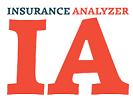CSM, BBA, TVM, PAA and many other abbreviations for IFRS 17 are available. You are working in the field of IFRS 17 or insurance accounting? Then you know industry experts, consultants and many more use a lot of abbreviations for IFRS 17 in their presentations every day. We don´t know the reason exactly, but having a look at the IFRS 17 accounting approaches and concepts, you know why. Imagine – you are standing in front of your audience and you have to say every time e.g. IFRS 17 “contractual service margin”, maybe sometime you will use “IFRS 17 CSM”?
In this article, we collected several common abbreviations for IFRS 17 and insurance accounting. If you have an abbreviation, which is not listed so far, feel free to use our comment field.
IFRS 17 What is CSM?
CSM stands for Contractual Service Margin and is defined in Appendix A Defined terms. CSM is a component of the carrying amount of the asset or liability for a group of insurance contracts representing the unearned profit the entity will recognise as it provides services under the
insurance contracts in the group.
CSM can be found in the concept of measurement on initial recognition and in the concept of subsequent measurement. See also 17.43
What is TVM?
TVM stands for Time Value of Money. TVM is part of measurement on initial recognition 17.32, estimates of future cash flows 17.33, Discount rates 17.36. and many other topics like Insurance finance income or expenses 17.86 or Changes in the fulfillment cash flows B113. Time Value of Money (TVM) is a huge and important topic within IFRS 17.
What is an insurance contract IFRS 17?
An insurance contract is a contract under which one party (the issuer) accepts significant insurance risk from another party (the policyholder) by agreeing to compensate the policyholder if a specified uncertain future event (the insured event) adversely affects the policyholder. See also IFRS 17 IN6 and Appendix A Defined terms.
See also Appendix B, Application guidance and the definition of an insurance contract (Appendix A). Insurance risks and uncertain future events are also defined there. Please note there is also a separate definition for an insurance contract with direct participation features available in IFRS 17
What is the definition of insurance contracts based on IFRS17?
When is an insurance contract really an insurance contract? The solution can be found in Appendix B2. B2 provides guidance on the definition of an insurance contract. 6 Topics are mentioned there:
- uncertain future event (see paragraphs B3–B5)
- payments in kind (see paragraph B6)
- the distinction between insurance risk and other risks (see paragraphs
B7–B16) - significant insurance risk (see paragraphs B17–B23)
- changes in the level of insurance risk (see paragraphs B24–B25); and
- examples of insurance contracts (see paragraphs B26–B30)
Examples of insurance Contracts IFRS17?
Examples of insurance contracts can be found in B26. There are several examples of insurance contracts mentioned if the transfer of insurance risk is significant. E.g.
- insurance against theft or damage,
- life insurance
- insurance against product liability
What is a group of insurance contracts?
A group of insurance contracts is a set of insurance contracts (see Appendix A Defined terms) resulting from the division of a portfolio of insurance contracts, into, at a minimum, contracts written within a period of no longer than one year and that, at initial recognition are
- (a)are onerous, if any;
- (b) have no significant possibility of becoming onerous subsequently, if any, or
- (c) do not fall into either (a) or (b)
What is a financial risk?
The risk of a possible future change in one or more of a specified interest rate, financial instrument price, commodity price, currency exchange rate, index of prices or rates, credit rating or credit index or other variable, provided in the case of a non-financial variable that the variable is not specific to a party to the contract. See also IFRS 17.32, 17.121 ff, Appendix A Defined terms.
Please note, even financial risk and insurance risk is used sometimes for the same situation. Insurance risk is a risk, other than financial risk, transferred from the holder of a contract to the issuer.
What is PAA?
PAA stands for Premium Allocation Approach and is defined in 17.53ff and 17.69ff for reinsurance contracts held. Premium Allocation Approach is a method for measurement of a group of insurance contracts. By applying the Premium Allocation Approach an entity may simplify the measurement of a group of insurance contracts.
What is BBA IFRS17?
BBA stands for “Building Block Approach” and is part of the general model (GM). the standard model, for IFRS 17. General Modell includes the Building Block Approach (BBA) for insurance contracts and the Variable Fee Approach (VFA) for contracts with underlying items. Both approaches have to do the measurement on initial recognition and subsequent measurement.
What is VFA?
VFA IFRS 17 stands for “Variable Fee Approach”
What is IASB?
stands for „International Accounting Standards Board”, you can also call them the “BIG Boss”
What is FASB?
stands for „Financial Accounting Standards Board”
What is IFRS?
stands for “International Financial Reporting Standards”
What is GASB?
stands for “Governmental Accounting Standards Board“
What is IASCF?
stands for “International Accounting Standards Committee Foundation“
What is GM IFRS17?
GM stands for General Model, the standard model for IFRS 17 measurement. General Model consists of the Building Block Approach (BBA) and Variable Fee Approach (VFA). The blocks of the Building Block Approach and Variable Fee Approach are:
What is NEP?
Net Earned Premium
What is SCI?
stands for “statement of comprehensive income”
What is OCI?
stands for “Other Comprehensive Income” and relates to all changes that are not permitted to be included in profit and loss statement
What is IAS?
stands for International Accounting Standards
What is DAC?
stands for Deferred Acquisition Cost
What is SAP FS-PER?
stands for SAP Performance Management for Financial Services
What is the coverage period?
the period during which the entity provides coverage for insured events
What is experience adjustment?
distinguished between experience adjustment for premium receipts and experience adjustment for insurance service expenses
What is SAP FPSL?
SAP FPSL stands for SAP Financial Products Sub-Ledger
What is SAP smart AFI?
Accounting for Financial Instruments. Two products are available Classic AFI and Smart AFI. Smart AFI runs on SAP HANA.
What is SAP IA?
What is SAP PaPM?
SAP Profitability and Performance Management rebranded name from SAP FS-PER
What is SAP FS-PER?
The old name of SAP PaPM. FS-PER stands for SAP Performance Management.






Dear Charly,
maybe it would be interesting to add a short description to the abbreviation OCI since it is frequently used but often it’s functional meaning is not known. It relates to all changes that are not permitted to be included in P/L ( = profit or loss :-)). Thus, these changes are recognized in OCI without impacting income.
Dear Andrea,
Thank you very much for your comment and your additional abbreviation OCI, which we of course add to our list. Feel free to add another one.